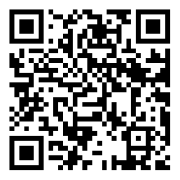
Study Shows GLP-1 Drugs Have "Double-Edged Sword" Effect on Eye Health
JAMA Network Open (published online on August 11; led by researchers from Lahey Hospital & Medical Center and other institutions)
A study published online on August 11 in JAMA Network Open reveals that GLP-1 receptor agonists (GLP-1 RAs), represented by semaglutide, have a "double-edged sword" effect on eye health in patients with type 2 diabetes (T2D). The research, led by investigators from institutions including Lahey Hospital & Medical Center, analyzed over 185,000 T2D patients using GLP-1 drugs and an equal number of non-users over a two-year period. It found that GLP-1 drugs slightly increase the risk of new-onset diabetic retinopathy (hazard ratio 1.07) but significantly reduce the risk of severe complications like blindness (by 24%), vitreous hemorrhage (by 26%), and neovascular glaucoma (by 22%). The study emphasizes the need for regular eye screening for all T2D patients using GLP-1 RAs.
GLP-1 receptor agonists, represented by semaglutide, have shown significant efficacy in weight loss and diabetes treatment. Pharmaceutical companies have made numerous efforts to expand their indications, while the side effects of these drugs have received increasing discussion and research. A study published online on August 11 in JAMA Network Open shows that for people with type 2 diabetes (T2D), the use of glucagon-like peptide-1 receptor agonists (GLP-1 RAs) slightly increases the risk of developing diabetic retinopathy but also reduces the risk of severe complications such as blindness.
The study was led by researchers from institutions including Lahey Hospital & Medical Center in the United States. They analyzed more than 185,000 type 2 diabetes patients using GLP-1 drugs through a large health research network database and compared them with an equal number of patients who did not use such drugs over a two-year period.
The study shows that GLP-1 drugs have a "double-edged sword" effect on eye health. On the one hand, the risk of newly diagnosed diabetic retinopathy in the medication group was indeed slightly higher (hazard ratio 1.07). On the other hand, GLP-1 drugs showed a significant protective effect against more severe complications that could lead to blindness. Compared with the control group, the risks of vitreous hemorrhage, neovascular glaucoma, and eventual blindness in the medication group were reduced by 26%, 22%, and 24% respectively.
This protective effect also exists in patients with pre-existing retinopathy. Subgroup analysis of the study showed that for these patients, the use of GLP-1 drugs did not accelerate the progression of their disease; instead, it reduced the probability that they needed invasive treatments such as laser therapy, intraocular injections, or surgery.
Why can a drug that effectively controls blood sugar have a negative impact on the retina in the short term? This may be a phenomenon known as "early worsening". Researchers found that whether through intensive insulin therapy or other methods, when the blood sugar level of diabetic patients drops rapidly and significantly in a short period of time, the existing diabetic retinopathy may temporarily worsen.
The study points out that the possible mechanism behind this phenomenon is that long-term hyperglycemia has made the microvessels of the retina fragile and dysfunctional. When blood sugar suddenly returns to normal, the sharp change in hemodynamics will cause new stress on these fragile blood vessels, similar to suddenly increasing the water pressure on an aging water pipe, which may lead to increased vascular permeability, leakage, or even the formation of new blood vessels, thereby temporarily worsening the condition. However, in the long run, stable blood sugar control remains the cornerstone of preventing and delaying the progression of diabetic retinopathy. The observed reduction in the risk of severe complications in the new study confirms this.
The study authors emphasize in their conclusion that these findings mean that all type 2 diabetes patients using GLP-1 receptor agonists, regardless of whether they have had retinopathy before, should undergo regular screening and monitoring for eye complications.
Although the "weight-loss wonder drugs" can effectively control blood sugar, their side effects cannot be ignored. According to multiple literature reviews, the most common side effects of these drugs are concentrated in the gastrointestinal tract, including nausea, vomiting, diarrhea, and abdominal pain. This is mainly because the drugs slow down gastric emptying, which helps increase satiety but may also cause indigestion.
In addition to common gastrointestinal reactions, some less common but more concerning risks are also worthy of attention. Studies have pointed out that GLP-1 drugs may increase the risk of gallstones and cholecystitis, and have a potential association with rare pancreatitis. Moreover, when used in combination with other hypoglycemic drugs (such as insulin), the risk of hypoglycemia will increase accordingly.
Even rarer side effects include skin rashes and eustachian tube dysfunction. There are reports indicating that such drugs have multiple effects on the cardiovascular system; although they can reduce the risk of cardiovascular diseases in some trials, some studies suggest that attention should be paid to secondary effects such as reduced blood pressure.
While GLP-1 drugs are changing the treatment landscape of diabetes and obesity with their powerful efficacy, patients and doctors must have a clear understanding of their potential risks. Users should closely monitor their physical reactions and balance efficacy and risks through regular check-ups to achieve truly individualized and precise treatment.
Wuhan Koolbio Technology Co. Ltd
Contact:Teena
Mobile:+86 15071104822
Email:info@koolbiotech.com
Add:Building 25, Langshi Mileage, Gaoxin 2nd Road, Donghu High Tech Zone, Wuhan City, Wuhan, Hubei, China